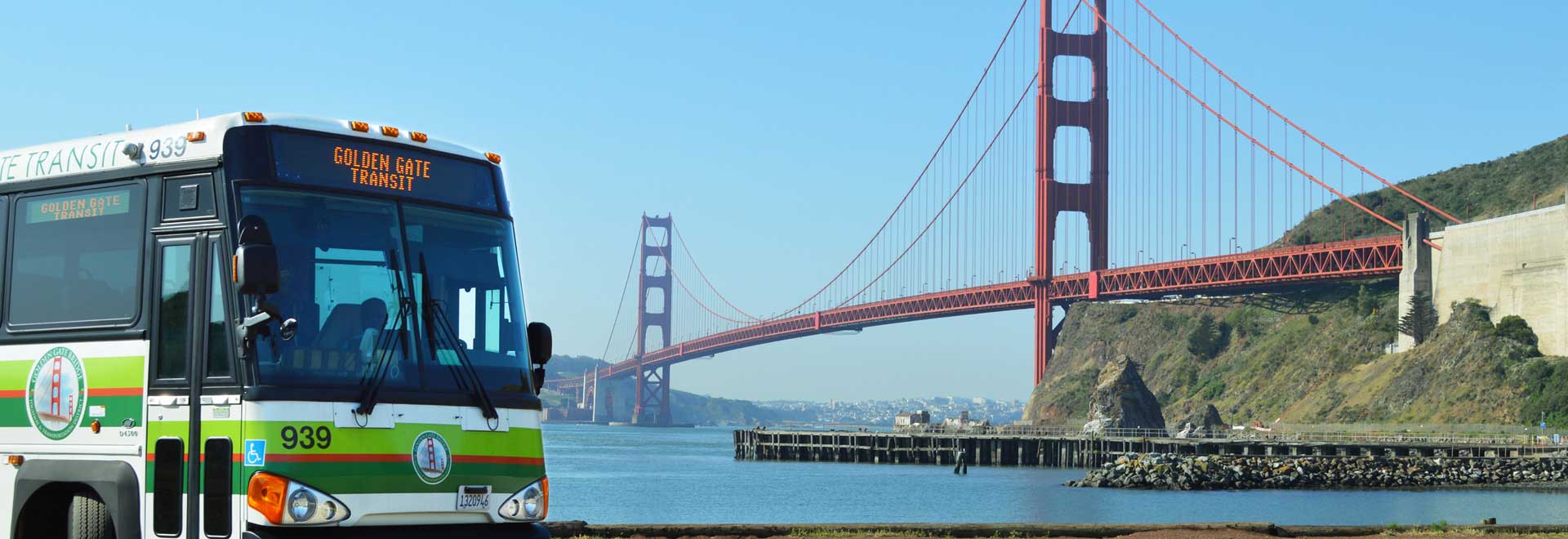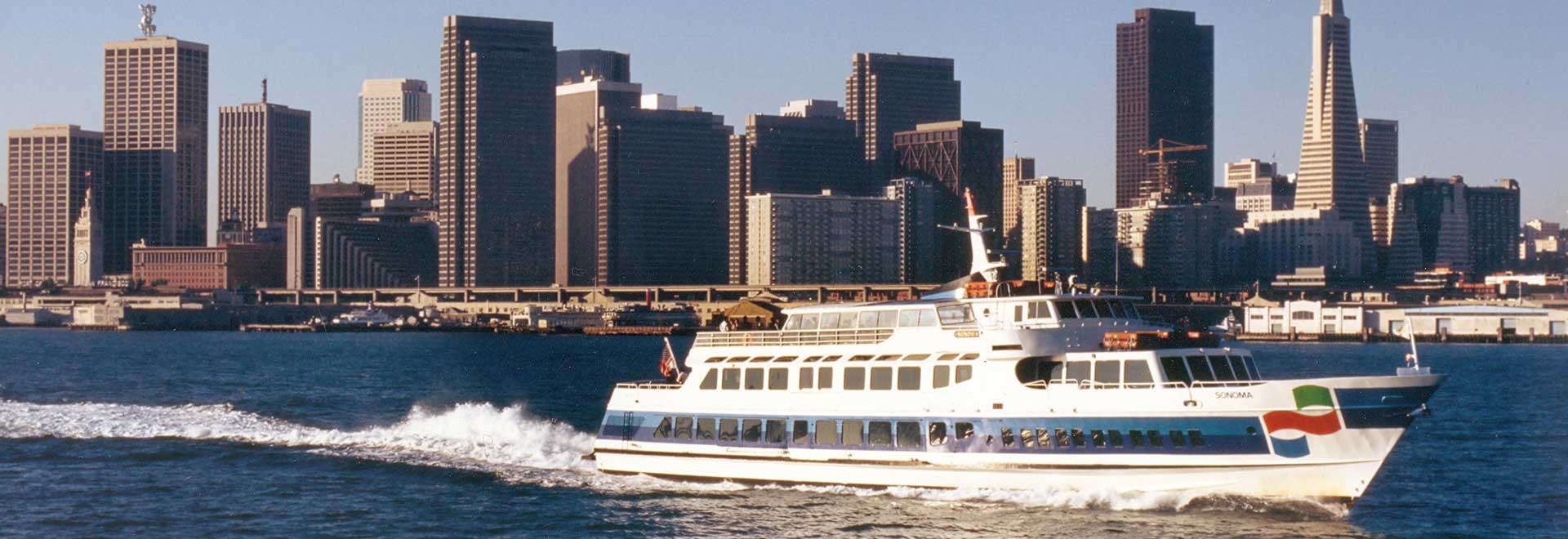The Golden Gate Bridge serves as a vital transportation link between the City and County of San Francisco and Marin County to the north. The Bridge is a fixed, six-lane roadway; is 1.7 miles long (main span is 4,200 feet long); and carries about 112,000 vehicles per day. The number of roadway lanes dedicated to the southbound or northbound direction of traffic flow can be modified several times throughout the day to accommodate shifting traffic patterns.
Tolls are assessed electronically in the southbound direction only – heading into San Francisco from Marin County.
The Bridge is part of the National Highway System, not the California State Highway System. U.S. Highway 101 and State Route 1 both end at the north abutment of the Bridge and 1,000 feet south of the Bridge Toll Plaza.
All vehicles crossing the Bridge must be in compliance with California Vehicle Code. The California Highway Patrol (CHP) has policing authority on the Bridge.
Any person who willfully drops or throws any object or missile from any toll bridge is guilty of a misdemeanor (CA Penal Code §219.3).
Speed Limit
The speed limit on the Bridge is 45 miles per hour (MPH). If travelling south, the speed limit through the toll plaza is 25 MPH. If travelling north, the speed limit is 35 MPH with an advisory speed of 25 MPH in the toll plaza area.
Lane Widths
The curb lanes (right lane, in both directions) are wider than other lanes - 11 feet wide versus 10 feet wide. At the Toll Plaza, toll lanes #1 and #2 are wider than all other toll lanes - 11 feet, 10 inches wide versus 9 feet, 2 inches wide. The height limit through the Toll Plaza is 14 feet, 6 inches.
Don't Fly Drones at the Golden Gate Bridge
Drones (also known as Unmanned Aerial Systems) pose a safety and security risk to the Golden Gate Bridge. They are banned from flying over or near the Bridge or other District property. Look for signs that remind people that drones are prohibited.
The Bridge is a very busy roadway, both as a transportation artery in and out of San Francisco and as an icon for the thousands of people who will visit over the holiday season. Whether due to operator error or technical problems, drones can and do fail. When they drop from the sky, they pose great risk of causing traffic, bicycle, and pedestrian accidents, especially given the crowded conditions on the Bridge and on District property. Drones are also prohibited from flying at or near the Bridge and surrounding property for security reasons. Drones found flying near the Bridge will be tracked and the operator identified. The aircraft may be confiscated and the operator may be prosecuted. Drones are also banned from National Park Service land, which includes areas immediately surrounding the Bridge to the north and south.

By Bridge, Bus & Ferry

By Bridge, Bus & Ferry

By Bridge, Bus & Ferry

By Bridge, Bus & Ferry